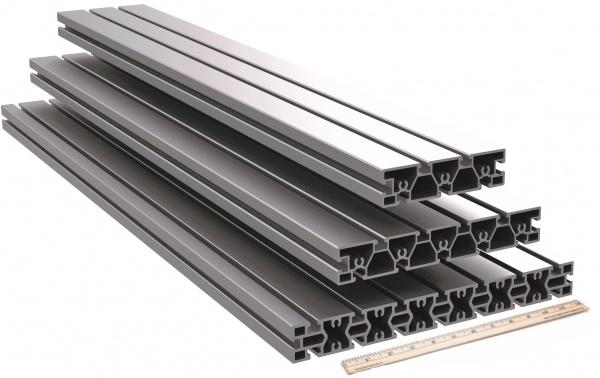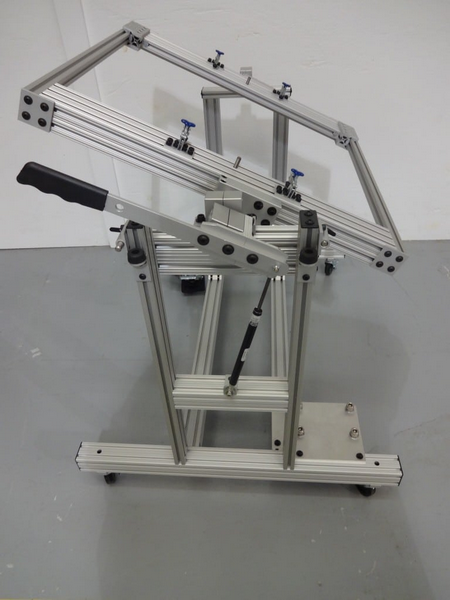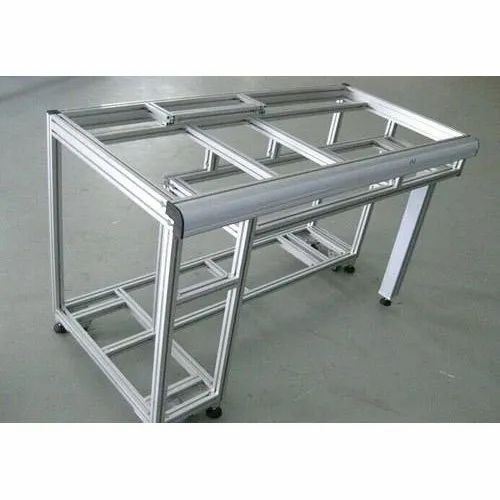Content Menu
● The Advantages of Aluminum Desks
● Ergonomics and Health Benefits
● Customization and Modularity
>> Steps to Create Your DIY Aluminum Desk
● Personalizing Your Aluminum Desk
● Conclusion
● Frequently Asked Questions
>> 1. What materials do I need to build a DIY aluminum desk?
>> 2. How do I ensure my aluminum desk is ergonomic?
>> 3. Can I customize the color of my aluminum desk?
>> 4. What are the benefits of using T-slot aluminum systems?
>> 5. How can I add storage to my DIY aluminum desk?
The Advantages of Aluminum Desks
Aluminum desks have gained popularity in recent years due to their numerous advantages. One of the most significant benefits is their durability. Unlike wooden desks, which can warp or scratch easily, aluminum is resistant to wear and tear. This makes it an ideal choice for a workspace that sees daily use.
Another advantage is the lightweight nature of aluminum. This allows for easy movement and reconfiguration of your workspace. If you ever need to change your office layout or move to a new location, an aluminum desk can be transported with minimal effort.
Aesthetically, aluminum desks offer a modern and industrial look that can complement various interior designs. Whether you prefer a minimalist style or a more eclectic approach, an aluminum desk can be tailored to fit your vision.

Ergonomics and Health Benefits
When designing your DIY aluminum desk, consider the ergonomic benefits it can provide. Many aluminum desks come with adjustable height options, allowing you to switch between sitting and standing. This flexibility can significantly improve your posture and reduce the risk of back pain associated with prolonged sitting.
Creating a workspace that promotes good posture is essential for maintaining your health. An aluminum desk can be designed to accommodate your height and preferences, ensuring that your computer screen is at eye level and your arms are at a comfortable angle while typing.
Customization and Modularity
One of the most exciting aspects of building a DIY aluminum desk is the ability to customize it to your liking. T-slot aluminum systems are particularly popular for this purpose. These systems allow you to create a modular desk that can be easily adjusted or expanded as your needs change.
With T-slot aluminum, you can add shelves, drawers, or even a monitor stand to your desk. This modularity means that your desk can grow with you, adapting to new technologies or changes in your work habits.
Steps to Create Your DIY Aluminum Desk
Creating your own aluminum desk can be a rewarding experience. Here's a step-by-step guide to help you through the process:
1. Design Your Desk: Start by sketching out your ideal desk design. Consider the dimensions, height, and any additional features you want to include, such as shelves or cable management systems.
2. Gather Materials: You will need aluminum extrusions, connectors, a work surface (such as plywood or a solid surface), screws, and tools like a saw, drill, and measuring tape. Make sure to choose high-quality materials to ensure the durability of your desk.
3. Cut the Aluminum Extrusions: Measure and cut the aluminum extrusions according to your design. Be precise with your measurements to ensure that all pieces fit together seamlessly.
4. Assemble the Frame: Using connectors, assemble the frame of your desk. This is where the T-slot system shines, as it allows for easy assembly and disassembly. Make sure the frame is sturdy and level.
5. Attach the Work Surface: Once the frame is complete, attach your chosen work surface. Use screws to secure it firmly to the aluminum frame. Ensure that it is flush and stable.
6. Add Personal Touches: Now comes the fun part—customizing your desk! You can paint the aluminum, add decorative elements, or incorporate organizational tools like cable trays or drawer units.
7. Final Adjustments: Once everything is assembled, make any final adjustments to ensure that your desk is comfortable and functional. Test the height and stability before using it for work.

Personalizing Your Aluminum Desk
Personalization is key to making your DIY aluminum desk truly yours. Here are some ideas to help you infuse your style into your workspace:
- Color and Finish: Consider powder coating or anodizing the aluminum to achieve a specific color or finish. This can add a unique touch and protect the surface from scratches.
- Accessories: Incorporate accessories that reflect your personality. This could include desk organizers, plants, or artwork that inspires you.
- Lighting: Good lighting is essential for any workspace. Consider adding LED strip lights under the desk or a stylish desk lamp to enhance the ambiance.
- Ergonomic Accessories: Invest in ergonomic accessories like a keyboard tray or a monitor stand to further enhance your workspace's functionality and comfort.
Conclusion
Building a DIY aluminum desk is a fantastic way to create a personalized workspace that meets your needs and reflects your style. With its durability, lightweight nature, and modern aesthetic, an aluminum desk can be a valuable addition to your home office. By following the steps outlined in this article, you can design and build a desk that not only looks great but also promotes productivity and comfort.

Frequently Asked Questions
1. What materials do I need to build a DIY aluminum desk?
To build a DIY aluminum desk, you will need aluminum extrusions, connectors, a work surface (like plywood), screws, and tools such as a saw and drill.
2. How do I ensure my aluminum desk is ergonomic?
To ensure your aluminum desk is ergonomic, design it with adjustable height options and make sure your computer screen is at eye level while your arms are at a comfortable angle.
3. Can I customize the color of my aluminum desk?
Yes, you can customize the color of your aluminum desk by powder coating or anodizing the aluminum to achieve your desired finish.
4. What are the benefits of using T-slot aluminum systems?
T-slot aluminum systems allow for easy assembly and customization, enabling you to create a modular desk that can be adjusted or expanded as your needs change.
5. How can I add storage to my DIY aluminum desk?
You can add storage to your DIY aluminum desk by incorporating shelves, drawers, or using organizational tools like cable trays to keep your workspace tidy.
By following these guidelines and tips, you can create a functional and stylish DIY aluminum desk that enhances your workspace and reflects your personal style. Enjoy the process of building and customizing your desk, and take pride in your unique creation!






















